FAUVISM
(1905-1910)
Fauvism is the style of Les Fauves (French for
"the wild beasts"). Its style emphasized vivid and unnatural (“crude”) colors over the softer and
naturalistic colors of Impressionistic art. Fauvism has its roots in the post-impressionist paintings
of Paul
Gauguin. It was his use of symbolic color that pushed art
towards the style of Fauvism.
The leaders of Fauvism were Henri Matisse and André Derain. Other artists
include Albert Marquet, Charles Camoin, Louis Valtat, Henri Evenepoel, Maurice Marinot, Jean Puy, Maurice de
Vlaminck, Henri Manguin, Raoul Dufy, Othon Friesz, Georges Rouault, Jean Metzinger, Kees van Dongen and Georges
Braque.
HENRI
MATISSE (1869-1954)
“Women with a
Hat” (Femme au Chapeau, 1905)
Oil on Canvas (San Francisco Museum of Modern Art)
First exhibited at the 1905 Salon d'Automne in Paris, ‘Femme au Chapeau’ became the
center of the controversy that launched the first modern art movement of the twentieth century — Fauvism ("wild
beast"). Matisse’s use of non-naturalistic colors and loose brushwork led to a sketchy or “unfinished” look –
a quality that shocked Parisian viewers of the day. It was so controversial it wasn’t shown for four
years.
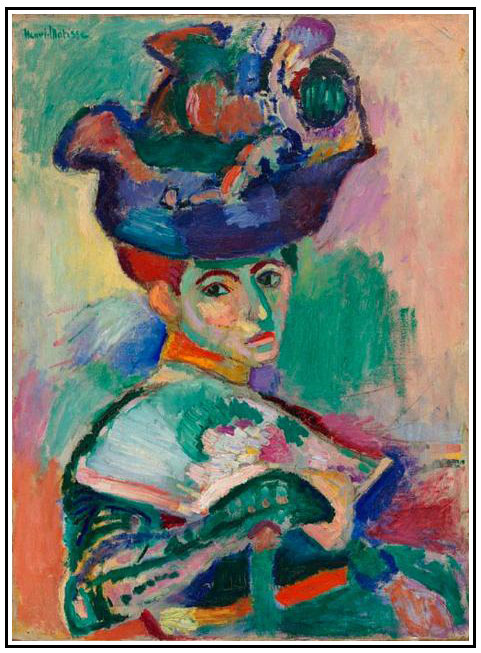
“The Joy of
Life” (Le Bonheur de Vivre, 1906
Oil on Canvas (Barnes Foundation, Philadelphia, PA)
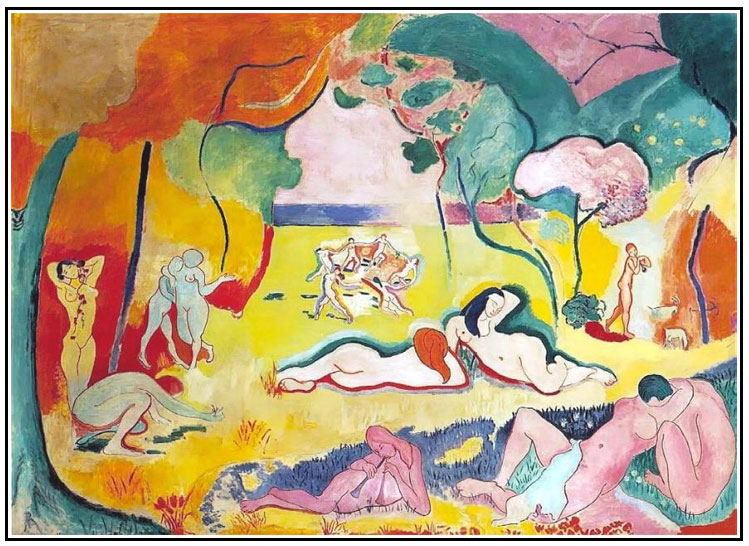
“Blue
Nude” (Souvenir de Biskra, 1907)
Oil on Canvas (Baltimore Museum of Art, MA)
“Blue Nude” was so was controversial in its time that it was burned in effigy in 1913
at the Armory Show in Chicago. The painting had a strong effect on Georges Braque and Pablo Picasso, partially
motivating Picasso to create Les Demoiselles
d'Avignon.
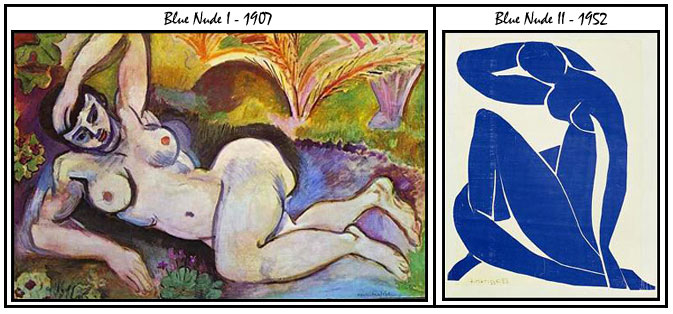
“The
Dance” (La Danse, 1909)
Oil on Canvas (Museum of Modern Art, New York City)
Matisse's fascination with primitive art is shown with his use of the warm colors of
the figures against the cool blue-green background and the rhythmical succession of the dancing nudes.
Feelings of emotional liberation and physical hedonism led Matisse to say that ‘The Dance’ was an "the overpowering
climax of luminosity".
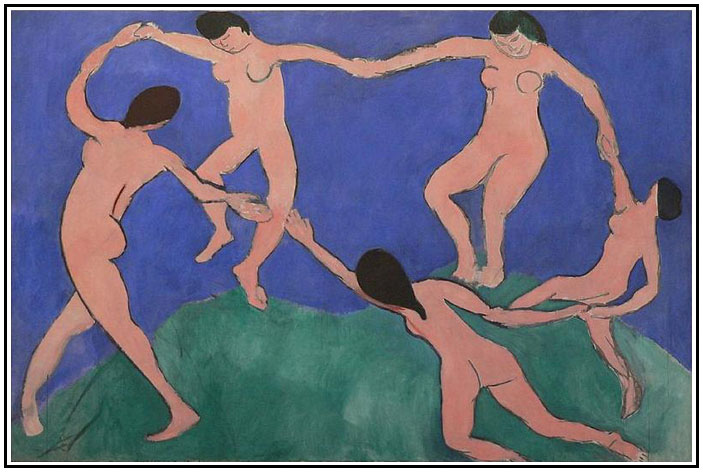
ANDRE
DERAIN (1880-1954)
“The Drying
Sails” (Le Sechage des Voiles, 1905)
Oil on Canvas (Puskin Museum, Moscow)
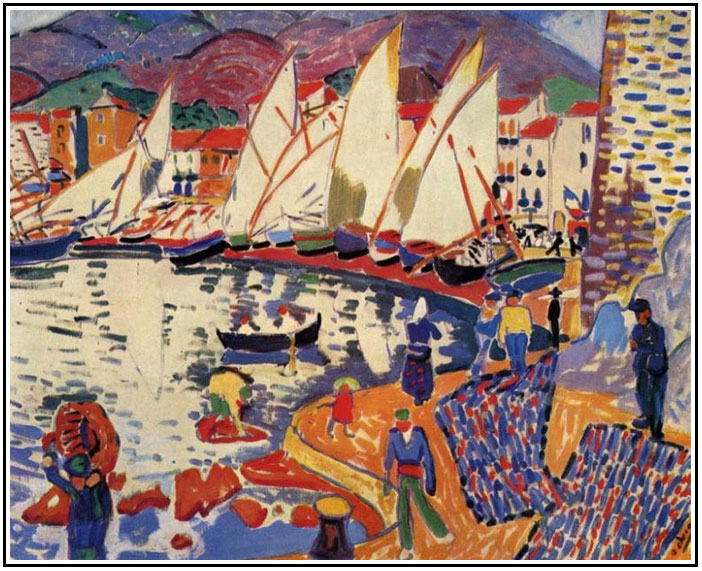
“Charing Cross
Bridge” (1906)
Oil on Canvas (Musee d’Orsay, Paris)
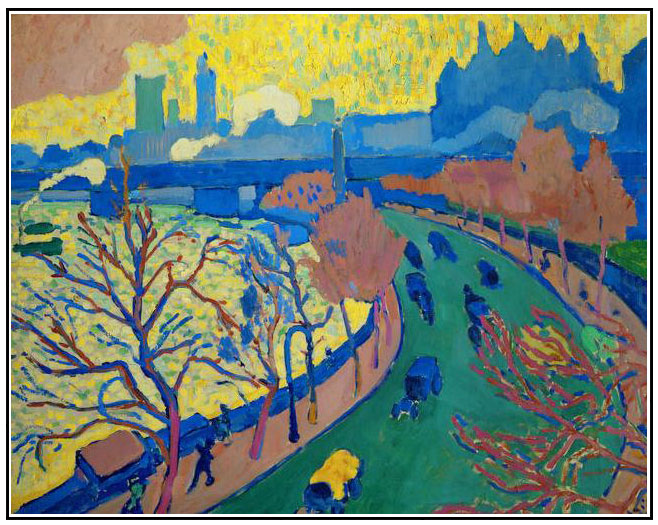
MAURICE de
VALMINCK (1876-1958)
“The River Seine at
Chatou” (1906)
Oil on Canvas (Jacques and Natasha Gelman Collection)
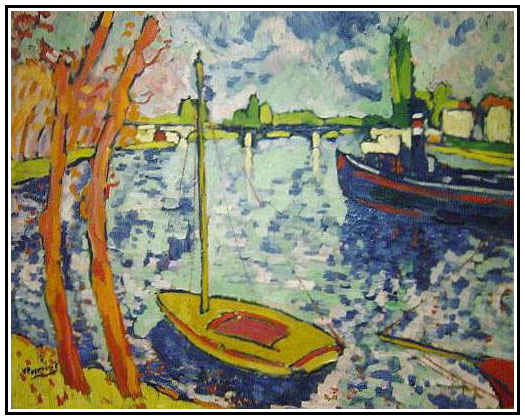
z
|